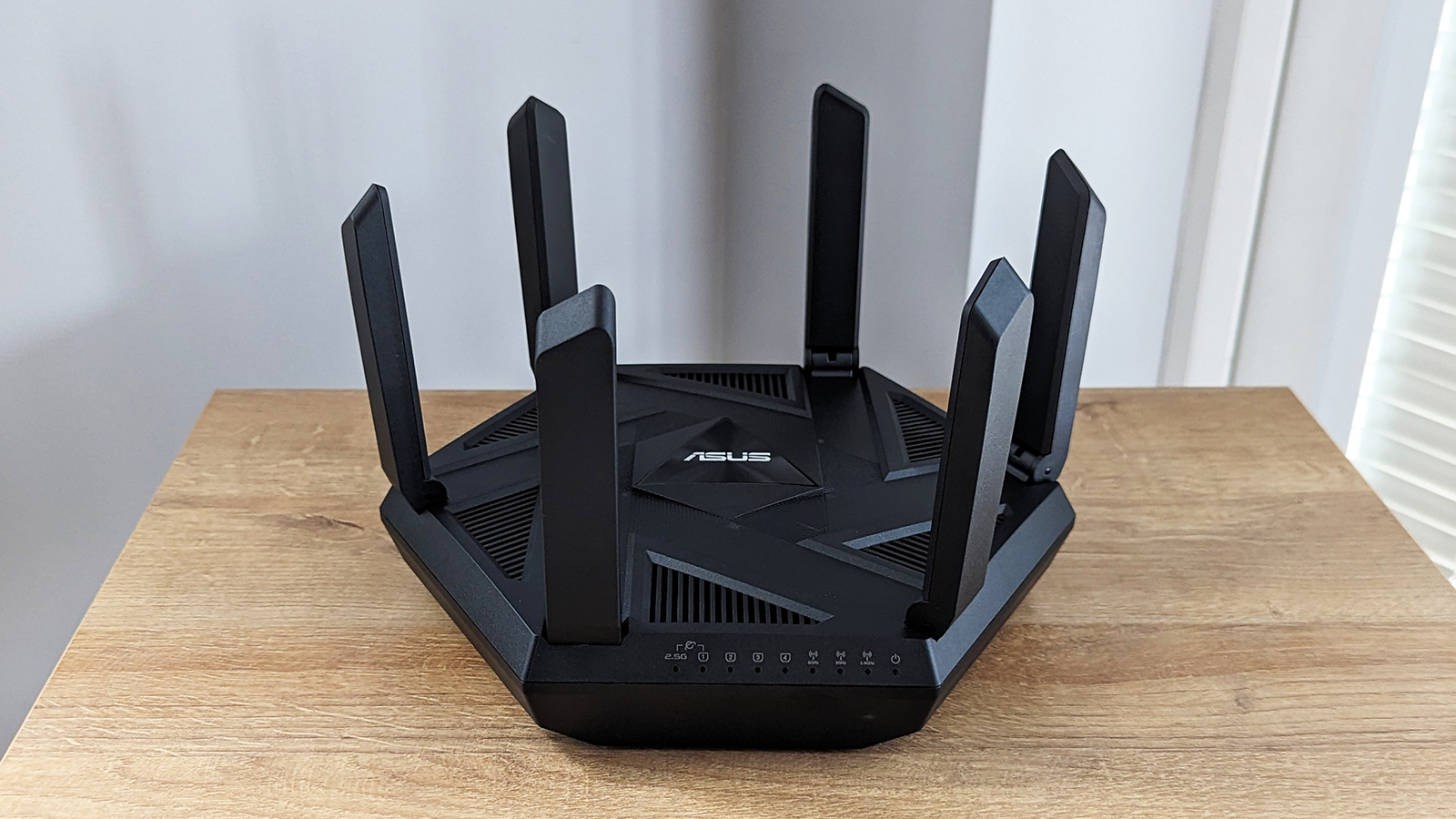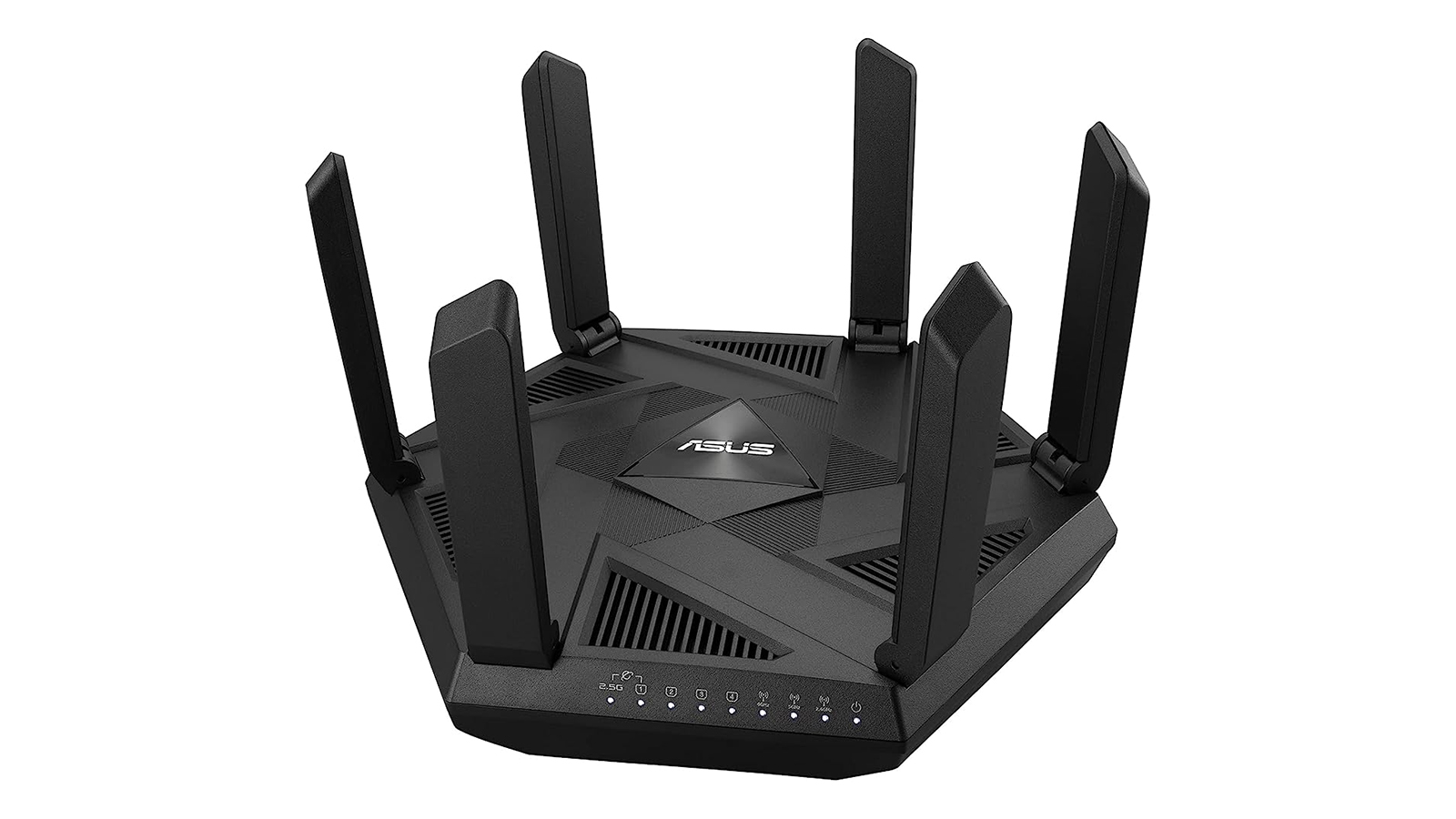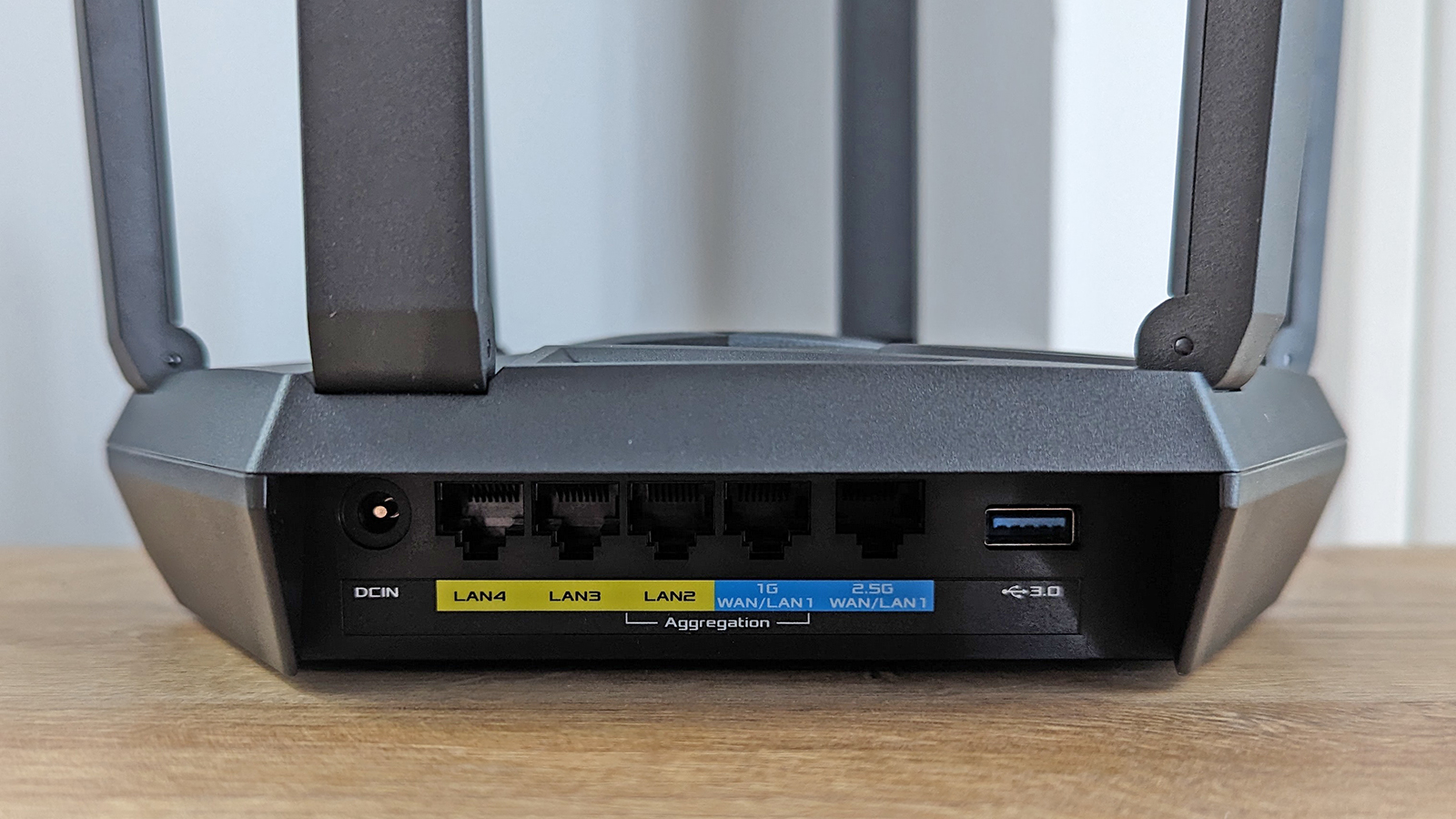Asus RT-AXE7800 review: one of the best Wi-Fi 6E routers for your home
The Asus RT-AXE7800 does everything it needs to and then some


The Asus RT-AXE7800 does just about everything you could ask for from a Wi-Fi 6E router and does it really well – and you also get some neat extras thrown in for free. No router is perfect for every user, but we think this would be a great upgrade for a lot of people.
-
+
Top-tier Wi-Fi 6E performance
-
+
Setup doesn't take long
-
+
Free parental controls built-in
-
-
Rather weird-looking design
-
-
Wi-Fi 7 is on the way
-
-
Not the cheapest
Why you can trust T3

The Asus RT-AXE7800 review is in contention for our best wireless router and best Wi-Fi 6 router lists, although it actually goes all the way up to Wi-Fi 6E. If you're looking to seriously level up your home networking kit, this could be the perfect way to do it.
Of course it's not going to be exactly the right purchase for everyone though: our detailed Asus RT-AXE7800 router review will tell you one way or another whether it deserves a place on your shopping shortlist, based on what your needs and your budget are.
Should you need any further tech buying advice, then we've got you covered there as well: after you've finished digesting our thoughts on the Asus RT-AXE7800, you might want to check out our guides to the best mesh Wi-Fi systems and the best standing desks.
Asus RT-AXE7800: price & availability
The Asus RT-AXE7800 review is available to buy right now, and the widget embedded above can direct you straight to the best prices on the web for this Wi-Fi 6E router. At the time of writing, we're seeing the hardware available for around £250 / $330. In the UK, you can pick it up from retailers including Amazon and Scan.
Asus RT-AXE7800 review: design & setup

You shouldn't have any difficulty at all when it comes to setting up the Asus RT-AXE7800 in your home. A little technical networking knowledge helps but is by no means essential, and you can configure the router as a new device through a web interface in your browser or through the companion apps for Android or iOS. In total, you won't be spending more than about 10-15 minutes getting it ready for use.
As far as the aesthetics of the device go, there's no doubt that this router wouldn't look out of place in a sci-fi series set in the near future. It's rather bulky and angular, with six external antennas that fold back against the unit, presumably to make it easier to package and transport. We don't think everyone is going to love the design, but some people will – and the majority probably don't care what their router looks like anyway.
The device measures 264 x 262 x 114mm with the antennas extended, and weighs in at 880g. It's fairly compact, especially considering the capabilities of the router, and a row of LED lights on the front of the unit do the job of keeping you informed about what is working and what isn't – though we didn't have any problems or downtime during our testing.
Get all the latest news, reviews, deals and buying guides on gorgeous tech, home and active products from the T3 experts
Around the back of the unit there's a power socket, four 1Gbps Ethernet ports, and a 2.5Gbps WAN/LAN port for hooking up to your existing router or modem. There's also a USB 3.0 (Type-A) port here for connecting up an external hard drive that can then be accessed by any computer, phone or tablet that you hook up to your W-Fi – it's a nice little extra that some users will appreciate.
Asus RT-AXE7800 review: performance & features

The process of attaching devices to the Asus RT-AXE7800 was quick and straightforward, and we were pleased to see solid speeds and connectivity all around our two-storey semi-detached property. With 2.4GHz, 5GHz and 6GHz bands to pick from, you're covered for both range and speed – the router lets you keep all three separate, or combine the 2.4GHz and 5GHz together and leave the 6GHz on its own.
We appreciate that extra flexibility, and with top speeds of 7.8Gbps, this is going to offer performance that's more than enough for most home users (that 2.5Gbps port means it's ready for high-speed fibre broadband too). It's also worth noting that two Ethernet ports can be combined for a 2Gbps wired connection – perfect if you have a laptop or console that needs the fastest possible link to the web.
Performance was pretty much flawless during our testing, with gadgets close to the router reaching speeds close to the maximum possible, and decent speeds achievable further away as well (especially on the 5GHz band). Adding dozens of devices didn't seem to trouble the router, and wired performance was impressive too – though you are then limited in terms of physical positioning of course.
The accompanying software features are great, including traffic optimisation tools and comprehensive parental controls for limiting time online and specific device access. What's really good is that none of this requires an extra subscription, or even an Asus account – something that we wish was the case with more manufacturers. There is a paid-for subscription for extra security features, but it's not pushed on you.
Asus RT-AXE7800 review: verdict

No router is ever going to increase the speed of the internet coming into your home of course – you'll need to speak to your broadband provider for that – but upgrading to a Wi-Fi 6E router like this means that more of your devices can stay connected, and get decent wireless speeds further away from the router. The Asus RT-AXE7800 scores highly in those respects, and offers plenty more too.
Parents will appreciate the restrictions they can control, while more advanced users are going to like the traffic optimisation tools and the ability to separate the bands out into separate networks. There's a bit of something here for everyone, though it helps to have a smattering of technical knowledge to make the most of everything the router has to offer – complete beginners might prefer something more basic.
While many home users will be looking to one of the best mesh Wi-Fi systems to eliminate dead zones and improve coverage, a lot of smaller homes can actually get by perfectly well with a single router – and bear in mind that the Asus RT-AXE7800 can function as part of a mesh network if you buy some extra hardware. For a standard-sized two-storey home or something smaller, you should get coverage just about everywhere.
Making router recommendations is difficult, because we can't know what hardware you already have in place and how big your property is. However, if you're not completely happy with your current setup and have plenty of Wi-Fi 6E devices to hook up, then the Asus RT-AXE7800 is an excellent option – especially if you don't need the range (and don't want the extra expense) of a mesh system.
Also consider
Another excellent Wi-Fi 6E router we've tested recently is the Linksys Hydra Pro 6E. Again, you get three bands to work with, and setup is simple and straightforward, with the option of parental controls included as well. It's not quite as sophisticated or as powerful as the Asus RT-AXE7800, but you should be able to find it for a little bit less money, so it might suit your needs better.
If you've got more to spend and a larger space to cover, but you still want the Asus brand name and the Wi-Fi 6E speeds, then consider the Asus ZenWiFi Pro ET12. This mesh system costs about four times as much as the Asus router we've reviewed here, but you'll have yourself a Wi-Fi network that is pretty much unbeatable – so it's a worthwhile investment if your home has a lot of floors and hundreds of gadgets to connect.
Dave has over 20 years' experience in the tech journalism industry, covering hardware and software across mobile, computing, smart home, home entertainment, wearables, gaming and the web – you can find his writing online, in print, and even in the occasional scientific paper, across major tech titles like T3, TechRadar, Gizmodo and Wired. Outside of work, he enjoys long walks in the countryside, skiing down mountains, watching football matches (as long as his team is winning) and keeping up with the latest movies.
